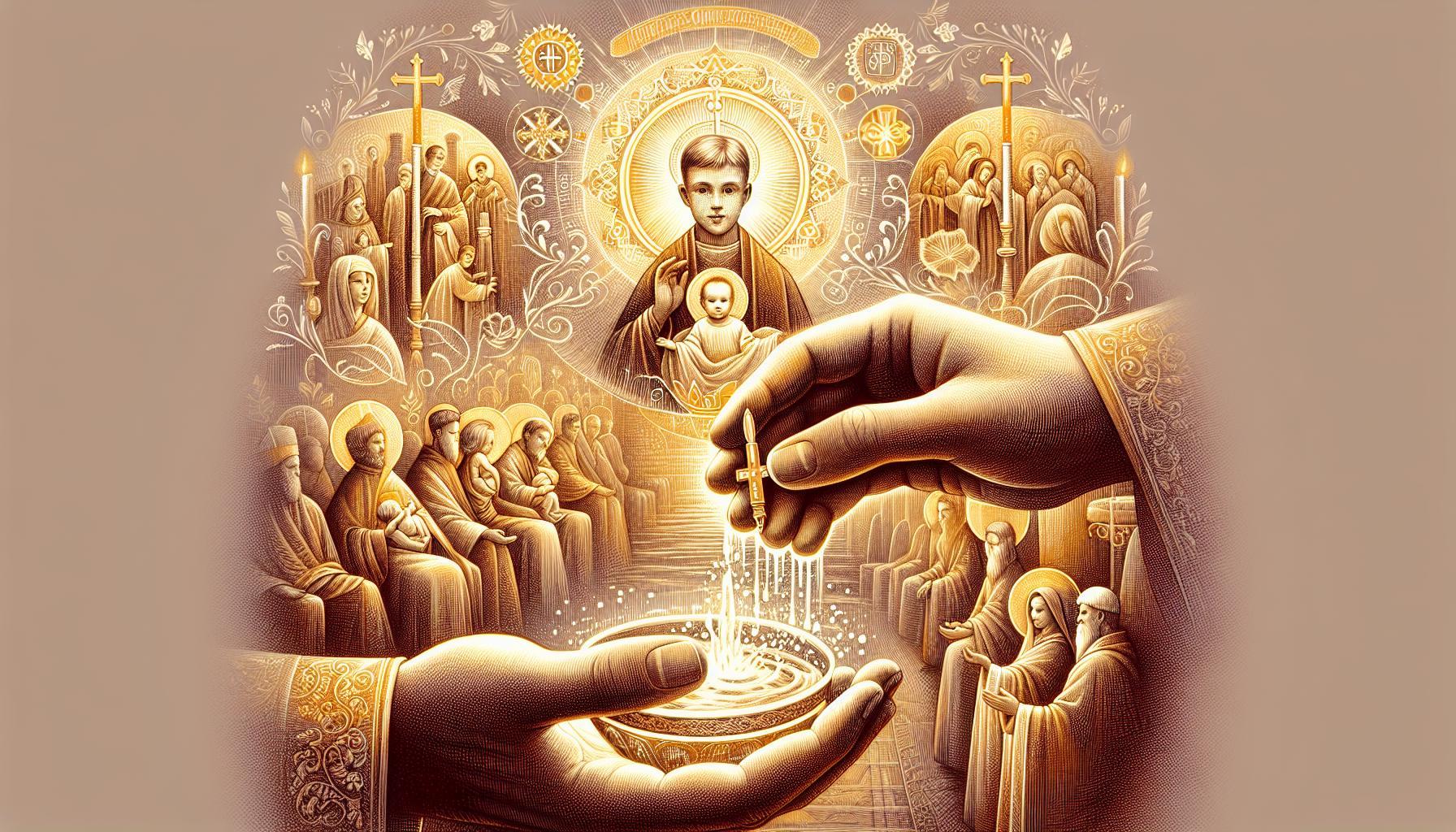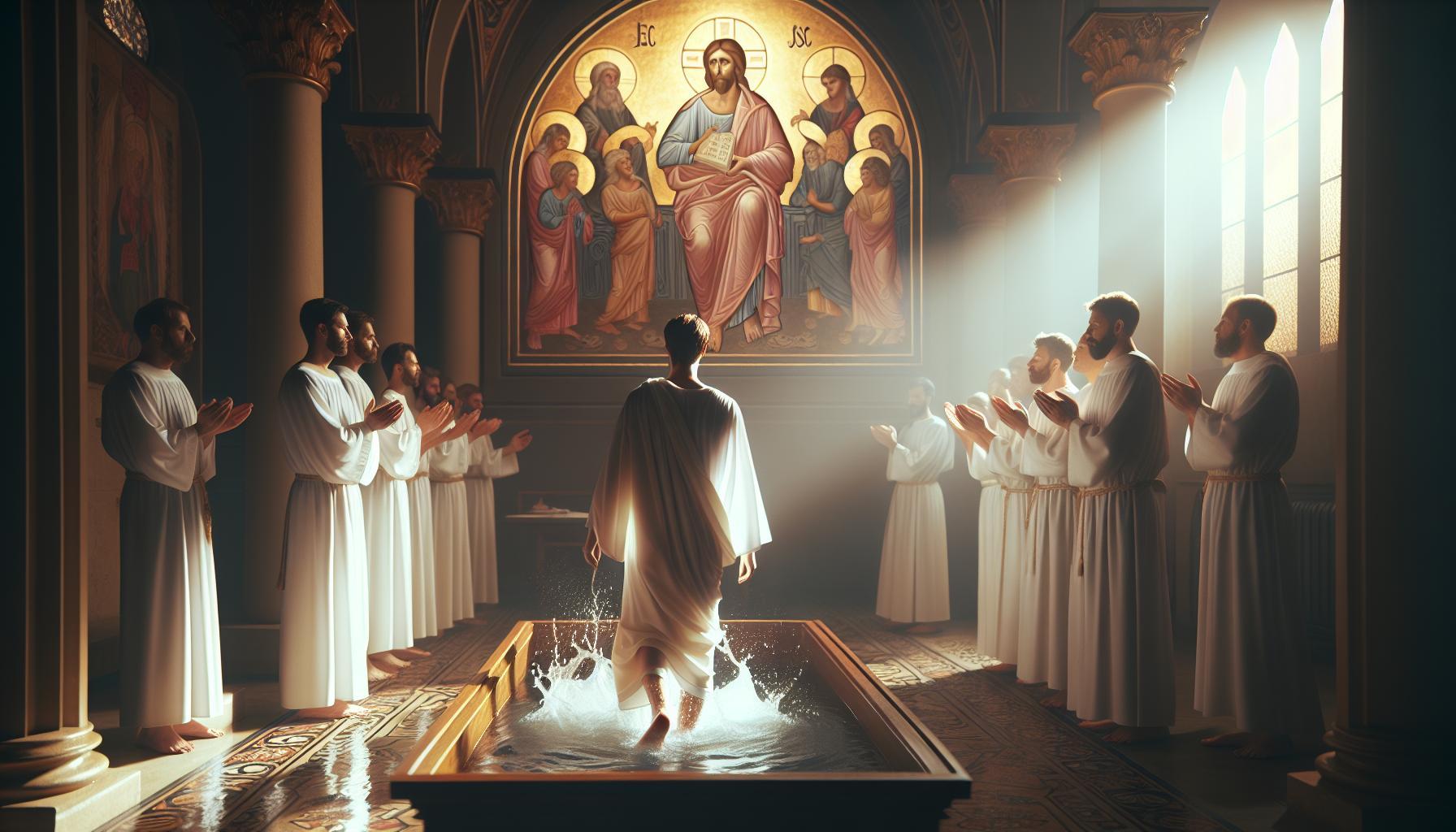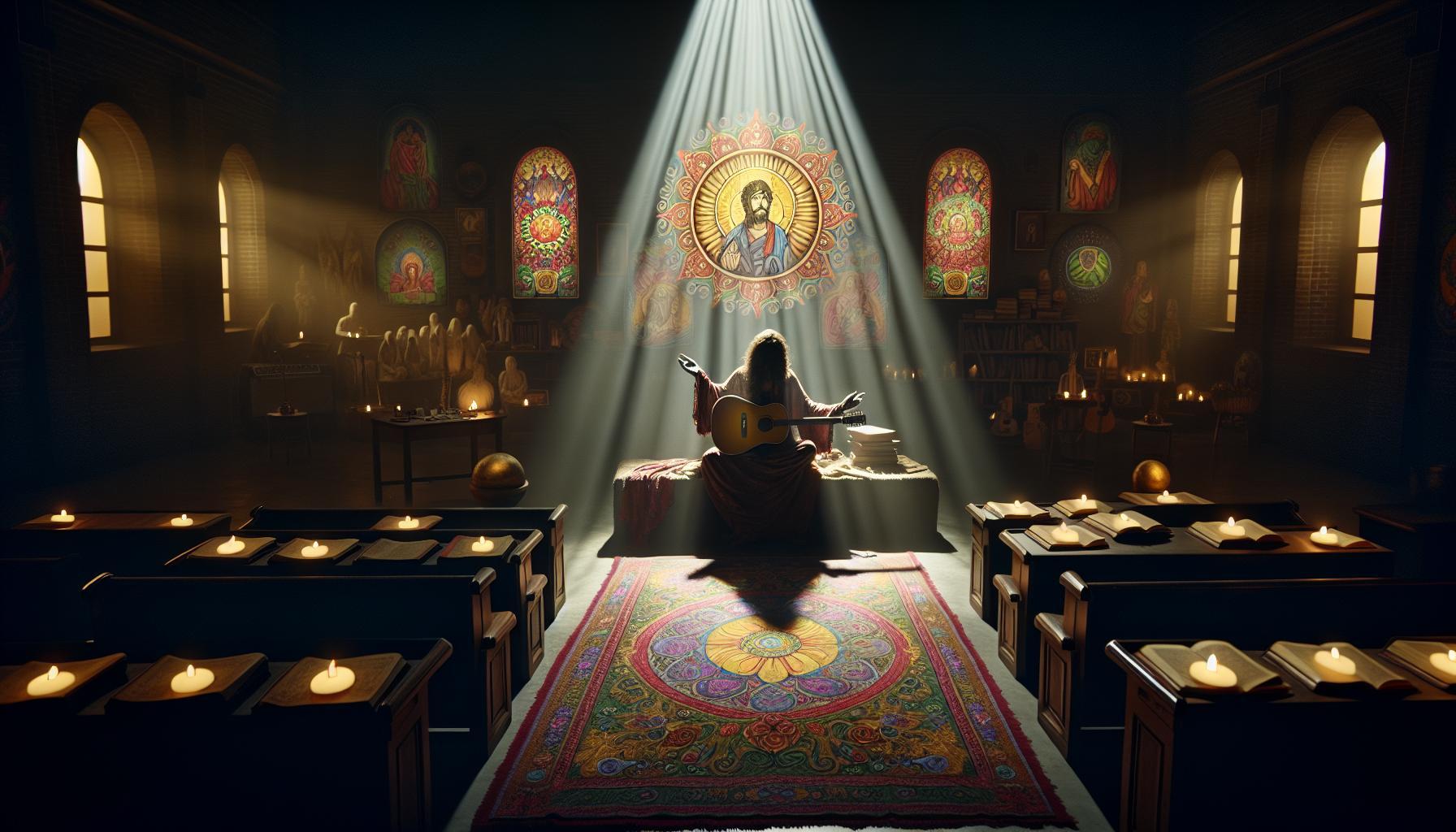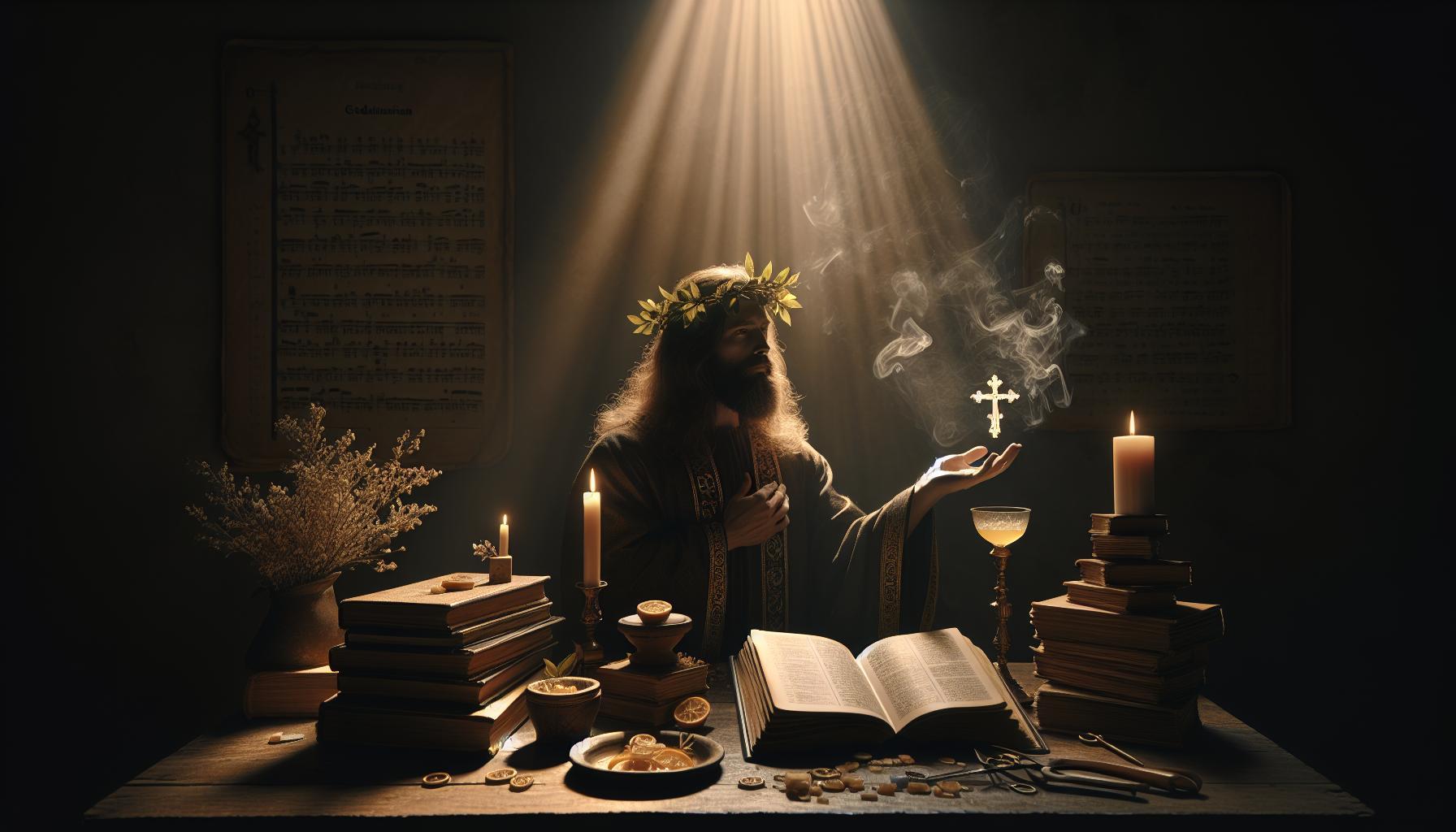Wondering how to navigate the sacred ritual of baptism in the Catholic tradition? This essential step for families marks the beginning of a child’s spiritual journey, making it a significant event in their lives. Our comprehensive guide breaks down the baptism process, offering insights and tips to ensure a meaningful experience for your family.
Understanding the Significance of Baptism in Catholicism
In the rich tapestry of Catholic tradition, baptism stands as a transformative rite, symbolizing a person’s initiation into the faith and the broader Christian community. This sacred sacrament is more than just a ceremony; it is a profound spiritual event that signifies the washing away of original sin, the embrace of divine grace, and the community’s commitment to nurture the baptized individual’s faith journey. Understanding its significance can deepen one’s appreciation of Catholic values and beliefs.
Theological Foundations of Baptism
At its core, baptism embodies profound theological principles, rooted in scripture and tradition. According to Catholic doctrine, baptism is the first of the seven sacraments and is essential for salvation. It reflects Jesus’ own baptism in the River Jordan and fulfills His directive to his disciples to “make disciples of all nations, baptizing them in the name of the Father, of the Son, and of the Holy Spirit” (Matthew 28:19). This highlights baptism as a vital step in entering into a covenant relationship with God.
The sacrament is meant to convey several key messages:
- New Birth: Through baptism, individuals are spiritually rejuvenated, entering a new life as a child of God.
- Removal of Sin: It signifies the cleansing of original sin, restoring the person’s relationship with God.
- Membership in the Church: Baptism incorporates the baptized into the Body of Christ, fostering community and belonging.
The Role of Community in Baptism
The act of baptism isn’t merely an isolated event; it happens within a communal context, emphasizing the collective aspect of faith. Family, friends, and the broader parish community gather to witness this pivotal moment, reaffirming their commitment to support the newly baptized in their spiritual development. This gathering signifies that baptism is not just a personal milestone but a communal obligation.
To facilitate this communal narrative, it’s essential to involve the community through various participatory practices, as illustrated in the table below.
| Role | Responsibilities |
|---|---|
| Parents | Guide and educate the child in the faith, ensuring they understand the significance of the sacrament. |
| Godparents | Act as spiritual mentors, supporting the child’s faith journey. |
| Parish Community | Welcome the baptized into the Church community and commit to their spiritual growth. |
In essence, baptism is a multifaceted sacrament that enriches both individual and communal faith life, marking a vital step in the lifelong journey of faith. Engaging with the significance of baptism encourages families and individuals to reflect on their spiritual journey, the meaning of their faith, and the responsibilities that come with being part of the Church.
The Role of Parents and Godparents in the Baptism Ceremony
The journey of a child through the sacrament of baptism is a significant milestone in both their spiritual life and the life of their family. Within this sacred ceremony, the roles of parents and godparents are not only ceremonial but deeply rooted in the spiritual upbringing of the child. These guardians are entrusted with responsibilities that extend beyond the day of baptism; they are crucial in nurturing the child’s faith and guiding them within the tenets of the Catholic Church.
Parental Responsibilities
Parents play a vital role in the baptism ceremony by expressing their commitment to raising their child in the Catholic faith. This commitment involves several key responsibilities:
- Understanding the Significance: Parents should familiarize themselves with the meaning and purpose of baptism as described in the Catholic Church teachings. This sacrament marks the child’s entry into the Christian community and symbolizes the washing away of sin.
- Preparation: Before the ceremony, parents often participate in a baptism preparation class offered by the parish. These sessions help them understand what to expect during the ceremony and the importance of their role in their child’s spiritual journey.
- Personal Commitment: During the baptism, parents publicly affirm their desire to nurture the child’s spiritual growth, emphasizing their responsibility to provide a Christian upbringing.
The Role of Godparents
Godparents, chosen by the parents, hold a special place in the baptism ceremony. Their role is both symbolic and practical, resonating throughout the child’s life:
- Spiritual Guidance: Godparents are expected to serve as spiritual mentors. They should foster the child’s faith development and encourage involvement in the church community.
- Support System: In addition to spiritual mentorship, godparents can provide emotional and practical support to both the child and their parents, helping to guide family decisions rooted in faith.
- Witness to the Baptism: During the ceremony, the godparents stand with the parents, affirming their commitment to support the child in their faith journey and to uphold the promises made during baptism.
In summary, the roles of parents and godparents during the baptism ceremony are foundational to the child’s experience of faith. Their active participation and ongoing support are essential in fulfilling the promises made during this significant sacrament, helping shape a life grounded in Christian values as outlined in resources like ‘What Is Baptism in the Catholic Church? Step-by-Step Guide for Families.’
Preparing Your Family for a Meaningful Baptism Experience
Navigating the spiritual journey of baptism can be a profound and transformative experience for both parents and children alike. It marks a significant milestone, not just in the life of the child but in the life of the entire family. To create a meaningful baptism experience, it is crucial to prepare thoughtfully and intentionally, enhancing the spiritual significance of the occasion while fostering a sense of community within your family.
Discussing the Significance of Baptism
Start by sitting down with your family to discuss what baptism means within the Catholic Church. Sharing personal beliefs and experiences can foster a deeper understanding among family members. Consider these points to guide your discussion:
- Symbolism of Purification: Explain how baptism symbolizes the cleansing of original sin and the beginning of a new spiritual life.
- Entry into the Church: Discuss how baptism signifies the child’s formal entry into the Catholic community, opening the doors to future sacraments.
- Godparent Role: Talk about the important role of godparents in guiding the child’s spiritual development.
Choosing the Right Date and Venue
Selecting an appropriate date and a church that resonates with your family can significantly enhance the experience. When planning:
- Consult the Church Calendar: Be mindful of important Church events and liturgical seasons, which could enhance the baptism experience.
- Visit Potential Venues: Tour the church to familiarize your family with the space and consider how it aligns with your vision for the celebration.
- Personal Touch: Consider any personal connections you might have with a church, such as family history or special memories, to create a deeper connection for your family.
Involving the Family and Community
The baptism ceremony is an excellent opportunity to bring family and friends together. Encourage active participation from loved ones, making the event a collective celebration of faith.
- Ask Family Members to Participate: Invite them to read scripture, offer prayers, or play a pivotal role during the ceremony.
- Organize a Gathering: Host a post-baptism celebration where family and friends can share their thoughts on faith and community, reinforcing bonds.
Preparing the Child
No baptism experience is complete without considering the child’s comfort and readiness. Here are a few ways to prepare your child for their baptism day:
- Talk about the Ceremony: Share what will happen during the baptism and why it is essential, using simple language to help them understand.
- Practice the Day of the Baptism: If they are old enough, practice what they will do, such as responding to questions or interacting with the priest.
- Dress Comfortably: Choose clothing that is both appropriate and comfortable, allowing your child to feel relaxed and at ease during the ceremony.
| Preparation Task | Involved Family Member | Timeline |
|---|---|---|
| Discuss the significance of baptism | Parents | 1 month before |
| Choose date & venue | Parents | 6-8 weeks before |
| Invite family & friends | Parents/Siblings | 4 weeks before |
| Prepare the child | Parents | 1-2 weeks before |
Through these steps, families can create a memorable baptism experience that emphasizes the spiritual journey, celebrates community engagement, and honors the tradition of the Catholic Church. This preparation not only acknowledges the importance of baptism but also strengthens family ties, inviting everyone to participate in this sacred occasion.
The Step-by-Step Process of a Catholic Baptism
When a child is baptized in the Catholic Church, it marks a significant moment not only for the family but also for the faith community. This sacred sacrament is viewed as a doorway into the Christian life, symbolizing purification, initiation, and belonging. Understanding the meticulous step-by-step process of baptism can help families navigate this important occasion with deeper meaning and preparation.
Preparation Before the Baptism
Before the day of the baptism, families engage in several preparatory steps to ensure that they fully participate in this sacred rite.
- Choosing a Godparent: It is essential to select a godparent who is a practicing Catholic and plays a supportive role in the child’s spiritual journey.
- Contact the Parish: Families should reach out to their local parish to schedule the baptism and discuss any required documentation or classes.
- Faith Formation Classes: Many parishes offer classes or sessions for parents and godparents to understand the significance of the sacrament better.
The Baptism Ceremony
The actual baptism ceremony typically unfolds in a structured manner, emphasizing both tradition and spirituality. Here’s what families can generally expect during the ceremony:
| Step | Description |
|---|---|
| Gathering | The ceremony begins with the congregation gathering, often including family and friends, to witness this sacred event. |
| Presentation of the Child | Parents present the child to the priest, expressing their intent to have the child baptized. |
| Sign of the Cross | The priest makes the sign of the cross on the child’s forehead, marking them as belonging to Christ. |
| Readings and Prayer | Scripture readings are shared, followed by prayers invoking God’s blessing on the child. |
| Rite of Baptism | The actual pouring of water occurs, with the priest stating, “I baptize you in the name of the Father, and of the Son, and of the Holy Spirit.” |
| Anointing with Chrism | After baptism, the child is anointed with holy oil, symbolizing their new identity in Christ. |
| Clothing in White | The child is dressed in a white garment, representing purity and the new life received through baptism. |
| Candle Lighting | A baptismal candle is lit from the Paschal candle, signifying Christ as the light of the world. |
Post-Baptism Responsibilities
After the baptism, both parents and godparents have vital roles to ensure the child is nurtured in their faith. Life-long commitment to the child’s religious upbringing is paramount.
- Faith Community Involvement: Actively participate in church functions and education programs that foster spiritual growth.
- Regular Mass Attendance: Ensure the child is introduced to the practice of attending Mass regularly.
- Life Celebrations: Recognize significant religious milestones, such as First Communion and Confirmation, as part of the child’s faith journey.
By grasping the step-by-step process of baptism within the Catholic Church, families can create a meaningful environment that honors this essential sacrament. Understanding these theological and practical elements deeply enriches the entire experience for everyone involved.
Symbols and Rituals: What to Expect During the Ceremony
The ceremony of baptism in the Catholic Church is rich with symbols and rituals that carry deep meaning, making it a profound experience for families and their communities. Each element is infused with significance, serving not only as a rite of passage but also as a reaffirmation of faith and community ties. Understanding these symbols can greatly enhance the connection felt during the ceremony, making it memorable for both participants and attendees.
Key Symbols of Baptism
During the baptism ceremony, several key symbols are prominently featured, each contributing to the overarching theme of spiritual purification and initiation into the Christian faith:
- Water: Central to the sacrament, water symbolizes purification and the washing away of original sin. The priest pours water over the head of the candidate, reflecting the belief that through baptism, individuals are cleansed and reborn into a new life in Christ.
- Oil: Often referred to as the “Oil of Catechumens,” this oil is used to anoint the baptized, marking them as part of Christ and signifying their empowerment by the Holy Spirit. It represents strength and healing, preparing the individual for the spiritual journey ahead.
- Candle: A lit candle is presented to symbolize the light of Christ entering the life of the newly baptized. This act signifies that the individual is called to carry the light of faith into the world, embodying the teachings of Christ in their daily life.
- White Garment: The white robe symbolizes purity and the new life the baptized now carries. It serves as a reminder of the individual’s new identity in Christ and the commitment to live a life reflective of that new creation.
Rituals to Anticipate
The baptism ceremony involves a series of poignant rituals that create a sacred atmosphere while emphasizing community involvement. Here are some typical elements to expect:
- Reception of the Child: This begins with the celebrant welcoming the baptismal candidate and their family, underscoring the communal aspect of the sacrament.
- Renunciation of Sin: The parents and godparents publicly reject sin and profess their faith, an essential step that underscores the serious commitment they are making on behalf of the baptized.
- The Baptismal Rite: This integral part of the ceremony includes the actual pouring of water and the invocation of the Trinity. It is the moment when the child officially becomes a member of the Church.
- Upon Reception of the Sacrament: The celebrant may offer additional blessings or prayers, emphasizing the individual’s new role within the Church community.
These symbols and rituals not only elevate the ceremony but also provide a meaningful framework for understanding what baptism signifies in the Catholic faith. Families are encouraged to reflect on these elements as they prepare for the celebration, fostering a deeper appreciation for this sacred tradition.
Life After Baptism: Nurturing Faith in Your Child
The moment a child is baptized is not only a significant milestone within the Catholic Church but also the beginning of an enduring spiritual journey. Parents often find themselves pondering how to nurture and deepen their child’s newfound faith beyond the baptismal ceremony. By engaging in meaningful practices and fostering discussions around faith and spirituality, families can create an environment that supports their child’s growth in faith.
Creating a Faith-Filled Environment
To cultivate a religious atmosphere at home, families can take several proactive steps:
- Regular Family Prayers: Incorporating daily prayers into your routine reinforces the importance of spirituality. Whether it’s a simple grace before meals or a dedicated time for family prayer, these moments instill a sense of community and provide a stable foundation for faith.
- Mass Participation: Attending Mass regularly not only deepens a child’s understanding of their faith but also emphasizes the value of community worship. Encourage participation by letting your child engage in activities like choosing readings or being part of the choir.
- Faith-Based Discussions: Foster open conversations regarding faith, morals, and the teachings of the Church. Asking thought-provoking questions can help children articulate their beliefs and understand the principles of Christianity more deeply.
Utilizing Resources and Activities
Educating children about their faith doesn’t have to be a formal process. Interactive resources and activities can make learning enjoyable and impactful:
| Resource/Activity | Description |
|---|---|
| Bible Stories for Children | Introduce your child to the Bible through age-appropriate storybooks that highlight key figures and parables, making complex concepts accessible. |
| Religious Crafts | Engage in crafts that relate to Biblical stories, such as creating Noah’s Ark or assembling a Nativity scene, to reinforce learned lessons. |
| Faith-Based Apps and Games | Leverage technology with applications that teach biblical stories or moral lessons through games and interactive quizzes tailored for kids. |
Encouraging Lifelong Commitments
As children grow, it’s essential to help them understand the significance of their baptism and encourage lifelong commitments to their faith. Consider introducing them to the sacrament of Confirmation once they reach the appropriate age, which builds on the foundations laid at baptism. Organize service projects that embody the Christian spirit—volunteering at a local charity or participating in community outreach can effectively link faith to action.
Ultimately, nurturing your child’s faith after baptism is an ongoing commitment that requires intentionality, creativity, and dedication. By actively participating in their spiritual development, you help them to understand and embrace their role as members of the Church, ensuring a rich and vibrant faith that lasts a lifetime.
Frequently Asked Questions About Catholic Baptism
Baptism represents a significant milestone in the life of a Catholic, symbolizing the entry into the faith and community. Many families often find themselves with a myriad of questions before proceeding with this sacrament. Understanding the core aspects can help ease any concerns and make the experience more fulfilling for everyone involved.
Who Can Be Baptized?
In the Catholic Church, anyone can be baptized, regardless of age. Infants are commonly baptized, but older children and adults seeking to join the Church also partake in this sacrament. For infants, parents and godparents are expected to profess their faith and commit to raising the child in the teachings of the Church. Individuals making a baptism decision later in life enter the process through a program called the Rite of Christian Initiation of Adults (RCIA), which prepares them for full participation in the Church.
What Is the Process for Baptism?
The baptism process generally follows several steps that guide families from the initial inquiry to the sacrament itself:
- Preparation: Families typically meet with a parish priest or a baptism coordinator to discuss the importance of baptism and complete any necessary paperwork.
- Choosing Godparents: Selecting appropriate godparents who will support and guide the child in their faith journey is a crucial part of preparation.
- The Ceremony: The baptism itself usually occurs during a Mass or a specific ceremony, where water is poured over the individual’s head, and sacred words are spoken to initiate the baptism.
- Post-Baptism Follow-Up: After the sacrament, the family is encouraged to continue nurturing their relationship with the Church and growing in their faith.
Can Baptisms Be Conducted outside the Catholic Church?
The Catholic Church recognizes baptisms performed in other Christian denominations as valid, provided they are conducted using water and the Trinitarian formula (“in the name of the Father, and of the Son, and of the Holy Spirit”). Individuals previously baptized in another Christian community may not need to undergo another baptism when entering the Catholic Church.
What If a Child Is to Be Baptized but Doesn’t Attend Mass Regularly?
Regular Mass attendance is an important aspect of Catholic life, but it is not a prerequisite for baptism. The essential requirement is that the parents and godparents are willing to support the child’s spiritual growth and faith development. Pastoral guidance often includes addressing any concerns about integrating regular worship into family life following the baptism.
In conclusion, understanding these frequently asked questions about baptism prepares families not only for the logistics of the ceremony but also for the lifelong significance of this holy sacrament. By engaging with the church community and nurturing faith at home, families can enrich their lives and those of their children through the grace of baptism.
Embracing the Community: The Spiritual Importance of Baptism
Baptism represents a pivotal moment in the life of a Catholic family, serving not only as a rite of passage for the individual but also as a profound communal celebration. Through this sacrament, families and their extended communities come together, reinforcing their shared faith and spiritual journey. Engaging in the sacrament of baptism creates a tapestry of connections woven together by love, tradition, and an unwavering commitment to nurturing faith in future generations.
The Community’s Role in Baptism
Baptism transcends the individual; it is a communal event that integrates the baptized into the wider community of believers. When families partake in this sacrament, they mark the beginning of the child’s spiritual journey not just within their household but also within the church. The act signifies that the child is welcomed into a larger family—the Church—where members pledge to support and guide one another in their faith.
- Witnesses of Faith: Family members and friends serve as godparents and witnesses, emphasizing the commitment to foster the baptized’s religious upbringing.
- Cultural Traditions: Many communities celebrate baptism with unique rituals that reflect local customs, enriching the experience and making it a memorable event.
- Shared Joy and Support: The congregation’s participation not only celebrates the sacrament but also reaffirms their role in the child’s spiritual development.
Building Spiritual Bonds
As families navigate the baptism process, they often find it valuable to reflect on the relationships involved. Organizing the baptism ceremony can serve as an opportunity to strengthen familial and community ties. Practical steps can include choosing godparents who embody the spiritual values the family wishes to instill or involving friends and relatives in planning the ceremony.
| Key Aspects of Community Involvement | Benefits |
|---|---|
| Engaging local church community | Fosters a sense of belonging and support |
| Incorporating family traditions | Enhances the personal significance of the ceremony |
| Creating rituals for community participation | Strengthens the bond among participants and reflects shared beliefs |
In essence, the spiritual importance of baptism lies not only in the sacrament itself but in how it weaves families and communities together in faith. By embracing this communal dimension, families can enrich their understanding of what it means to belong to the Church, ensuring that the values learned and experienced during the baptism are celebrated and upheld throughout life. Every baptism is a reminder of the joyful journey undertaken together, uniting everyone involved in a shared mission of faith and support for the little one as they grow.
Q&A
What Is Baptism in the Catholic Church?
Baptism in the Catholic Church is a sacrament that signifies spiritual rebirth and the cleansing of original sin. It is a vital part of a Christian’s initiation into the faith, typically performed on infants or new believers.
In Catholic teaching, baptism is indeed one of the seven sacraments. It involves the use of water, symbolizing purification and the beginning of a new life in Christ. Families considering baptism for their children can follow this step-by-step guide to understand the process better.
Why Does Baptism Matter in Christianity?
Baptism is significant in Christianity as it represents the forgiveness of sins and the entry into the Christian community. It shows one’s commitment to living a life aligned with the teachings of Christ.
In the Catholic faith, baptism is believed to be instituted by Jesus himself, making it a foundational aspect of the faith. It not only cleanses individuals but also marks their official induction into the Church, fostering a sense of community among believers.
Can I Baptize My Child if I’m Not Catholic?
Generally, for a Catholic baptism, at least one parent should be a baptizing member of the Church. Non-Catholics can participate, but they need to respect the sacraments’ significance and the Church’s guidelines.
In such cases, families can explore having a Catholic sponsor, chosen from among the family or community, to help guide the religious upbringing of the child. It is important to discuss your situation with a local priest for personalized guidance.
What Happens During a Catholic Baptism Ceremony?
A Catholic baptism ceremony typically includes readings from the Bible, the blessing of water, and the actual baptism where the priest pours water over the head of the person being baptized while invoking the Holy Trinity.
Families can expect a warm and celebratory atmosphere, often involving the presence of relatives and friends. Special rituals such as anointing with oil and the lighting of a baptismal candle further enhance the experience, symbolizing purity and the light of Christ.
How Do I Prepare for My Child’s Baptism?
Preparation for a child’s baptism involves choosing godparents, scheduling a date with the parish, and attending pre-baptism classes if required. These steps help the family understand the sacrament’s importance.
Different parishes may have varying requirements, but a shared theme is the need for a commitment to raise the child in the Catholic faith. Connecting with your local Church allows you to gain valuable insights and support through the process.
What Are the Requirements for Baptism in the Catholic Church?
Requirements for baptism typically include the presence of at least one Christian parent, the selection of godparents, and participation in preparatory sessions offered by the parish.
In some cases, a baptism might necessitate a letter from a priest to confirm eligibility and readiness. It is advisable to engage with your local church early on to clarify specific requirements and maintain open communication as you approach the ceremony.
Can Adults Be Baptized in the Catholic Church?
Yes, adults can be baptized in the Catholic Church through the Rite of Christian Initiation for Adults (RCIA). This program helps in understanding the faith before receiving the sacrament.
Adults preparing for baptism often engage in a journey of faith that involves instruction, prayer, and community involvement. This process allows them to participate meaningfully in their baptism, often scheduled during the Easter Vigil, making it a special event within the Church calendar.
The Conclusion
In conclusion, understanding the sacrament of baptism in the Catholic Church opens a door to rich theological insights and practical implications for families. This sacred rite is more than a ritual; it symbolizes the initiation into a faith community and the embrace of God’s grace. By following our step-by-step guide, you can navigate the preparation and celebration of baptism with confidence, fostering a nurturing environment for your child’s spiritual journey.
As you explore these sacred traditions, we encourage you to engage with your local faith community, seek guidance from clergy, and participate in discussions that respect diverse backgrounds. This journey is not just about the ceremony; it’s about building a foundation of faith, love, and connection. Whether you’re a lifelong Catholic or exploring baptism from a different perspective, we invite you to deepen your understanding and embrace the transformative power of this beautiful sacrament. Explore further, share your thoughts, and let the blessings of this sacred moment enrich your family’s life.





